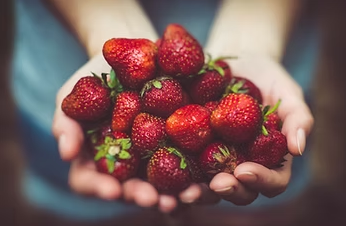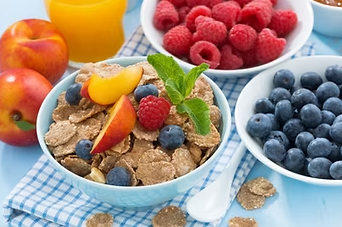Delicious and Nutritious: A Guide to Healthy Snacking
In a world where busy schedules and fast food temptations often reign supreme, finding healthy snacks can be a challenge. But fear not! Healthy snacking doesn't have to be dull or time-consuming. With a bit of creativity and planning, you can enjoy delicious snacks that nourish your body and keep your energy levels steady throughout the day.
What Makes a Snack Healthy?
Before we dive into examples, let's break down the components of a healthy snack:
1. Nutrient Density: Healthy snacks are packed with vitamins, minerals, and other beneficial nutrients. They offer more nutrition per calorie compared to processed snacks.
2. Balanced Macronutrients: A good snack contains a balance of carbohydrates, proteins, and fats. This combination helps keep you full and satisfied, providing sustained energy.
3. Whole Foods: Snacks made from whole, unprocessed foods are generally healthier. They contain fewer additives and preservatives, offering a cleaner energy source.
4. Fiber Content: Fiber aids digestion and helps you feel fuller longer. Snacks high in fiber are ideal for controlling hunger between meals.
5. Low Added Sugars: Avoid snacks high in added sugars, as they can lead to energy crashes and other health issues. Natural sweetness from fruits or minimal added sugars is best.
Tips for Smart Snacking
- Plan Ahead: Prepare snacks in advance to avoid reaching for unhealthy options when you're hungry. Use containers or bags to portion out snacks for the week.
- Watch Portions: Keep an eye on portion sizes to avoid overeating, especially with calorie-dense foods like nuts.
- Stay Hydrated: Sometimes, thirst is mistaken for hunger. Drink water throughout the day to stay hydrated and maintain energy levels.
- Listen to Your Body: Eat when you're hungry, not out of boredom or stress. Mindful eating helps you make healthier choices.
Planning Your Snacks
- Create a Snack List: Write down a list of your favorite healthy snacks and keep it handy. This makes grocery shopping easier and ensures you always have options.
- Prep on Weekends: Dedicate some time on the weekend to prepare snacks for the week. Cut up fruits and vegetables, make a batch of trail mix, or prepare chia seed pudding.
- Use Visual Reminders: Keep healthy snacks visible in your kitchen or work area to encourage you to reach for them first.
- Batch Cooking: Prepare larger batches of certain snacks like energy bars or hummus and store them in individual portions for quick access.
Removing Temptation from the Kitchen
- Clear Out Junk Food: Go through your pantry and remove or donate unhealthy snacks. Replace them with healthier alternatives.
- Organize Your Pantry: Arrange healthy snacks at eye level and put less healthy options out of sight or harder to reach.
- Avoid Impulse Buys: Make a shopping list and stick to it. Avoid shopping when hungry to reduce the temptation to buy unhealthy snacks.
- Set Boundaries: If you live with others, communicate your goals and suggest keeping unhealthy snacks in a designated area you can easily avoid.
Healthy Snack Ideas
Now that we know what to look for in a healthy snack, let's explore some tasty options:
1. Apple Slices with Almond Butter
- Why It's Healthy: Apples are high in fiber and vitamins, while almond butter provides healthy fats and protein. This combination keeps you satisfied and offers a delicious blend of textures and flavors.
2. Greek Yogurt with Berries
- Why It's Healthy: Greek yogurt is rich in protein and probiotics, supporting gut health. Berries add natural sweetness, fiber, and antioxidants.
3. Veggie Sticks with Hummus
- Why It's Healthy: Vegetables like carrots, celery, and bell peppers are low-calorie and nutrient-dense. Hummus offers a dose of protein and healthy fats, making this a balanced snack.
4. Trail Mix with Nuts and Dried Fruits
- Why It's Healthy: A homemade trail mix can be tailored to your taste, ensuring you avoid added sugars and unhealthy fats. Nuts provide healthy fats and protein, while dried fruits offer natural sweetness and fiber.
5. Whole-Grain Crackers with Avocado
- Why It's Healthy: Whole-grain crackers are a great source of complex carbohydrates, and avocado provides healthy fats and fiber. This combo is filling and satisfying.
6. Cottage Cheese with Pineapple
- Why It's Healthy: Cottage cheese is high in protein and low in fat. Adding pineapple gives a burst of flavor and a dose of vitamins and antioxidants.
7. Chia Seed Pudding
- Why It's Healthy: Chia seeds are packed with fiber, omega-3 fatty acids, and protein. Mix them with almond milk and a touch of honey for a delicious, nutritious pudding.
8. Edamame
- Why It's Healthy: Edamame is a great plant-based protein source and is rich in vitamins and minerals. It's a simple, satisfying snack you can enjoy on the go.
9. Rice Cakes with Peanut Butter and Banana
- Why It's Healthy: Rice cakes are low in calories and provide a satisfying crunch. Peanut butter adds protein and healthy fats, while banana offers potassium and natural sweetness.
10. Dark Chocolate and Almonds
- Why It's Healthy: Dark chocolate contains antioxidants, and almonds provide healthy fats and protein. This duo is a satisfying treat that doesn't compromise nutrition.
Healthy snacking is all about choosing the right foods that nourish your body and satisfy your cravings. With these tips and ideas, you'll be well on your way to enjoying delicious snacks that support your well-being!
Want to discuss more healthy snack options or how to get started on your health and fitness journey? Lets chat!




